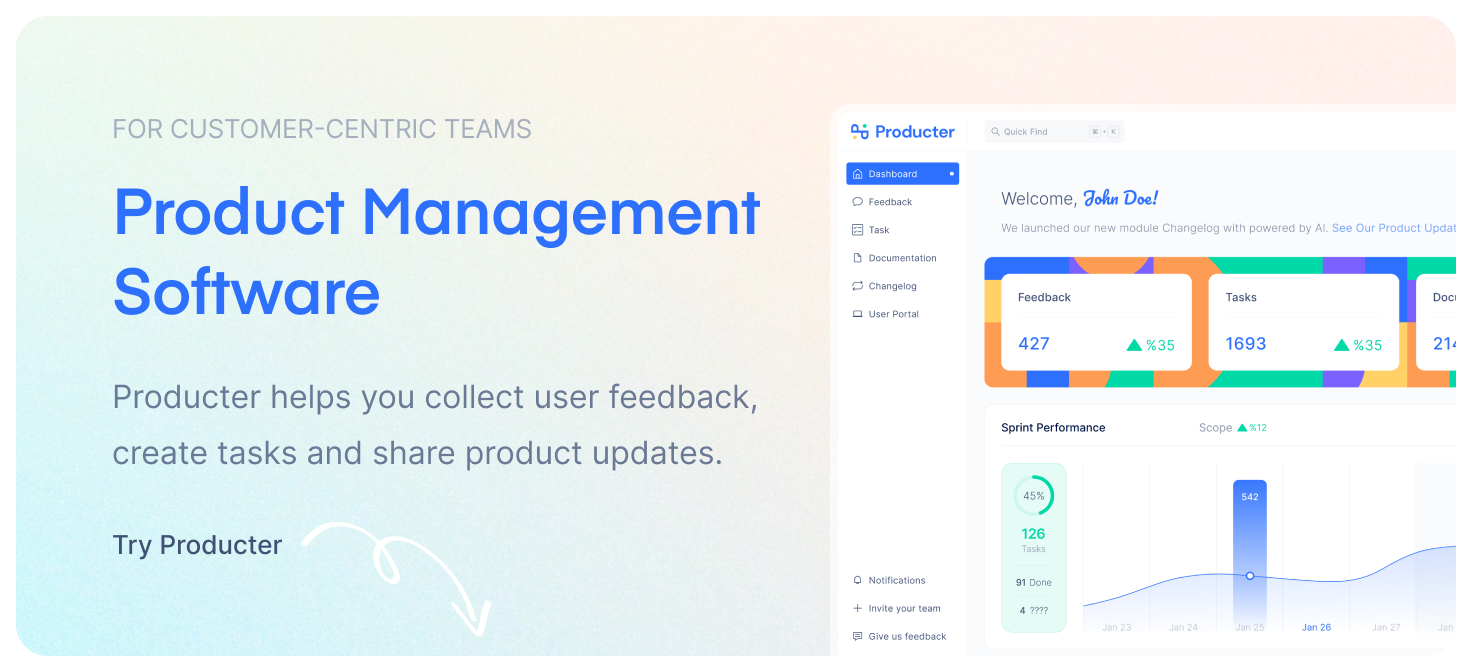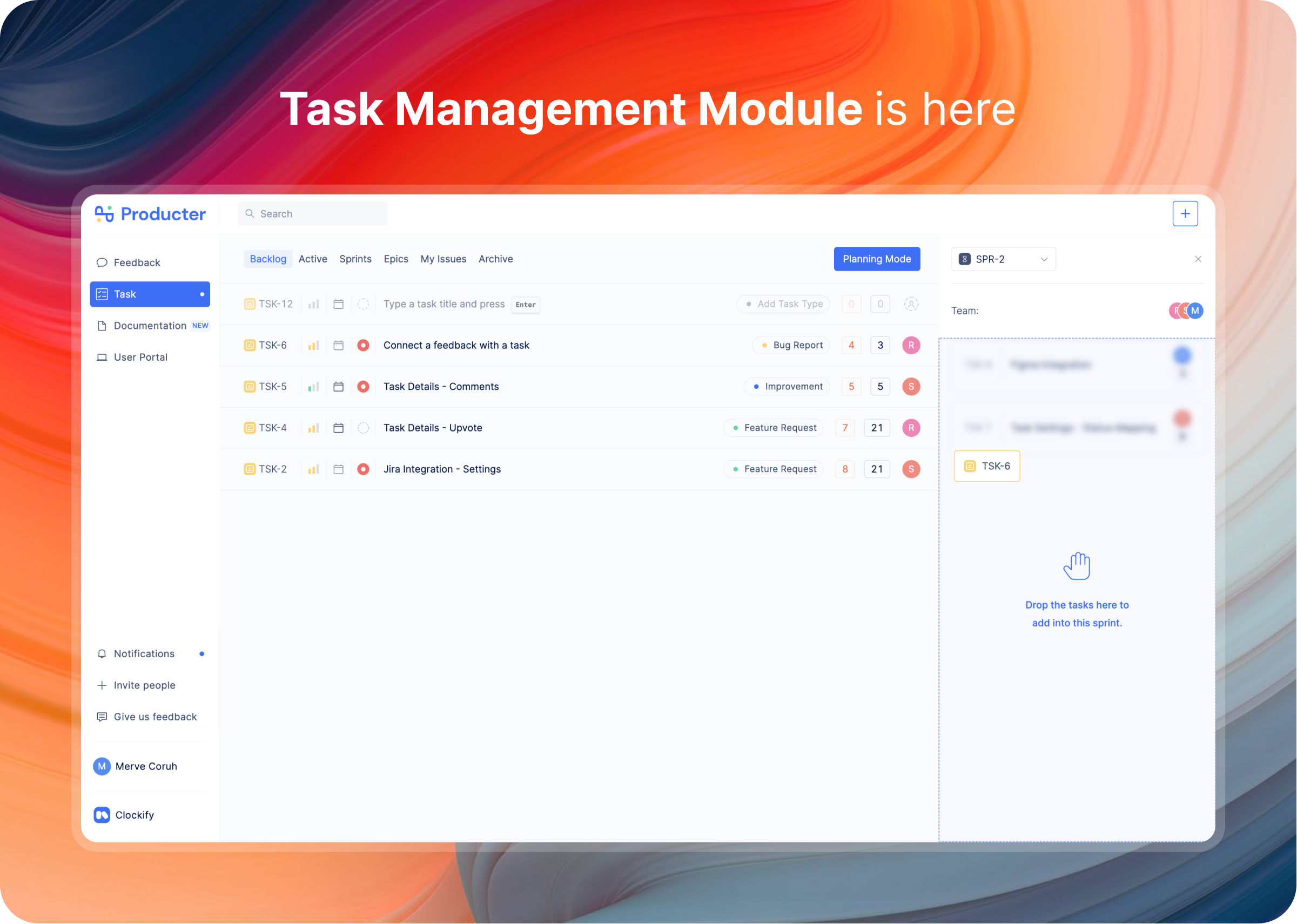In the scrum agile framework, a sprint planning meeting is where scrum teams decide which are the most valuable product backlog items to deliver in the next sprint. As a product manager, it is helpful to understand how sprints are usually managed to encourage your development team to become more agile. Using this method, you will be able to deliver functionality that your customers want to see.
Sprint planning helps teams prioritize the backlog with the most important items at the top. In this way, scrum team selects the items from the prioritized backlog and breaks them down into smaller tasks. Furthermore, the team members can select achievable goals for the current sprint based on their capabilities and estimation. This prevents overloading and team burnout.
In this article, we will give you the best tips to run the most effective sprint planning.

Who manages a sprint?
As a product manager, it is important that you understand your role in the process and how each scrum role contributes.
Product owner
The product owner speaks for the customer and advocates for business needs. They understand the business, customer and market requirements. Their aim is to maximize the value of the work completed by the development team. Product managers often act as product owners on scrum teams.
Scrum master
Scrum master makes sure the process follows agile principles and values. They serve as facilitators, remove any roadblocks and protect the team from outside interruptions.
Development team
The team that drives the plan for each sprint and completes the work. They are self-managed and do all duties required to deliver a working increment, including development and testing.
The product owner, scrum master and development team collaborate, by deciding on the sprint goal and selecting relevant backlog items that help them achieve that objective. And product managers make sure that work prioritized and completed within each sprint aligns with the product vision and customer needs.
Product managers validate that their team is building the right thing across every phase of development. They make sure everyone on their team understands who owns what. They own the product vision, update the product roadmap, provide updates to stakeholders, consistently communicate with team members and attend relevant scrum events.

Sprint planning tips for product managers
Hold a backlog grooming session
There are two important tasks in sprint planning: grooming the backlog and deciding which work to complete in the next sprint.
Unless you regularly organize your product backlog, it can quickly transform into a cluttered mess of features and outdated requests. To ensure the sprint planning meeting effective, you need to have a well-groomed product backlog. A well-organized backlog aligns the team around the upcoming work and gives everyone the information they need to complete their work efficiently.
Remember that product backlog grooming should be a team effort and you should collaborate with development team in the backlog work. The product backlog should be clear and transparent. This will help the team stay focused on the goals they want to achieve and prioritize features that will deliver the most value.
Create a draft sprint goal
A sprint goal is a simple objective set before a sprint begins in the scrum methodology for agile. These goals are set collaboratively by the product owner and the delivery team. It is essential that sprint goals measure easily and convey the underlying purpose of the sprint backlog items.They provide purpose and alignment and make it easier to communicate with stakeholders. The chances of making a valuable product improvement increase during the sprint if the tasks are connected to a clear sprint goal.
Creating a draft sprint goal is necessary as the product owner decides which product backlog items to refine and prioritize before the sprint meeting, based on their relevance to the objective. This makes the meeting more productive and keeps it right on track.
Plan collaboratively
Agile sprint planning is a collaborative effort. As product manager, it’s your responsibility to make sure your team collaboratively decides on the work that needs to be prioritized in the next sprint. Scrum master, product owner and the development team all work together towards the same goal. Make sure everyone understands the thought that goes into evaluating and prioritizing items in your backlog.
Keep it short
Although sprint planning is essential, you still need to make sure the meeting is short and sweet. The meeting should not take more than 40 minutes of your time. This is long enough for your team to find alignment on what the sprint goal should be and why some tasks are prioritized during backlog grooming.
Conclusion
Scrum methodology increases transparency and collective ownership throughout the development cycle. Effective sprint planning keep the team motivated with a defined goal in sight. When you incorporate sprint planning into the company’s culture, it encourages the cross-functional team to regularly review product backlog, ask questions, discuss problems and celebrate achievements together. As a product manager, take the time to understand your role in the process and use these tips to run the most effective sprint planning.
Producter is a product management tool designed to become customer-driven.
It helps you collect feedback, manage tasks, sharing product updates, creating product docs, and tracking roadmap.
👉🏻 Try Producter's Task Management Module now

Written by Yagmur Vatangul Colak





